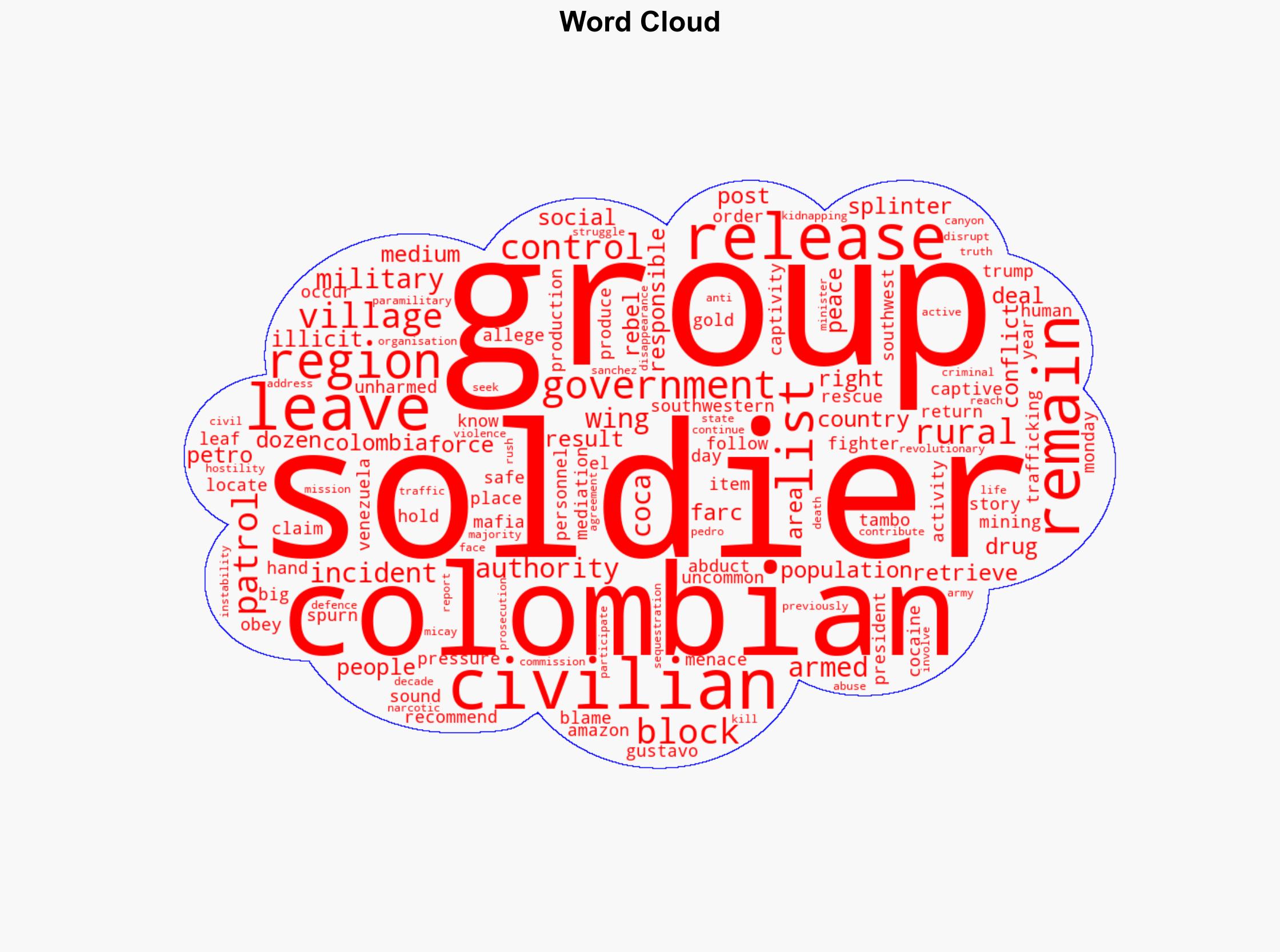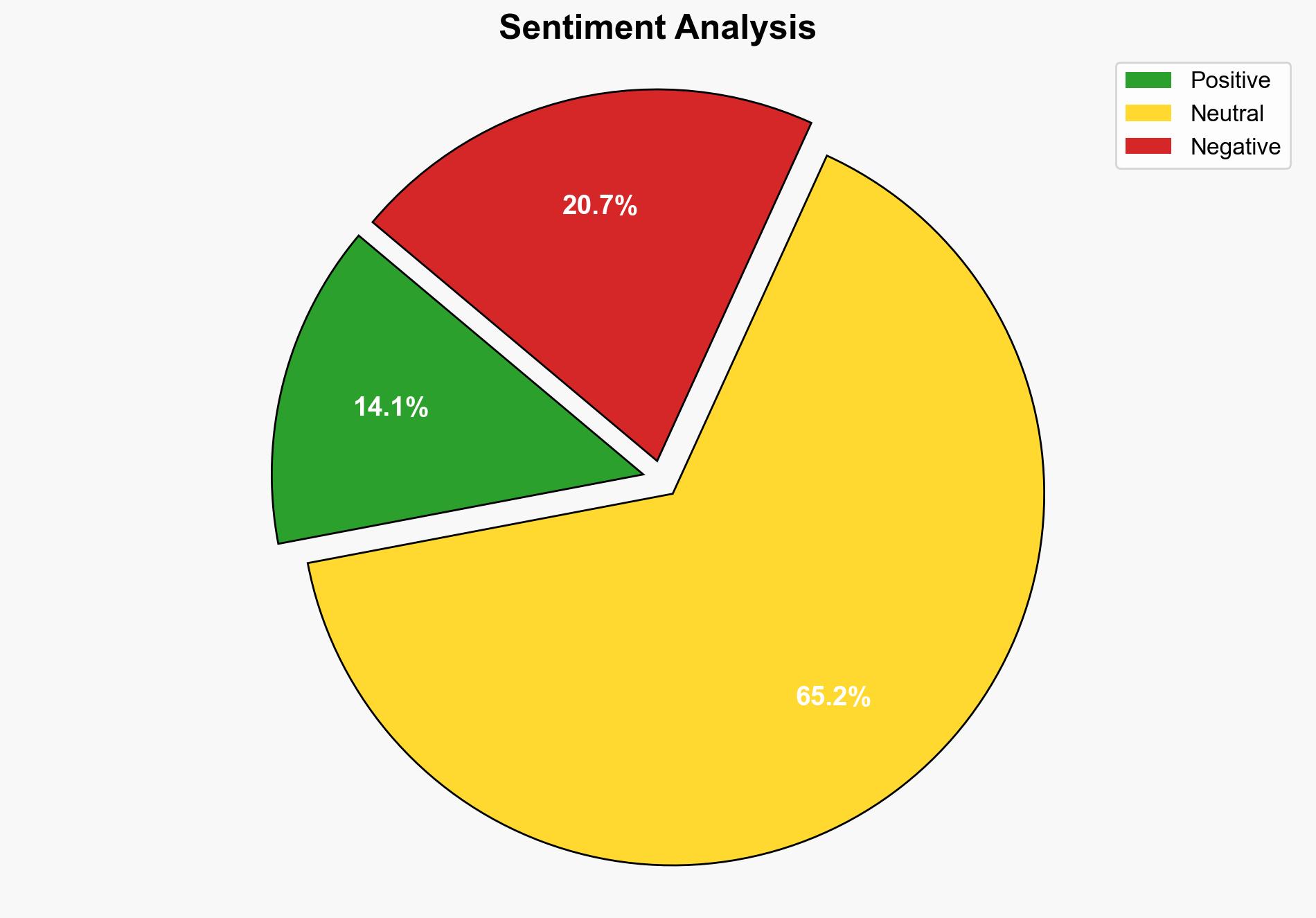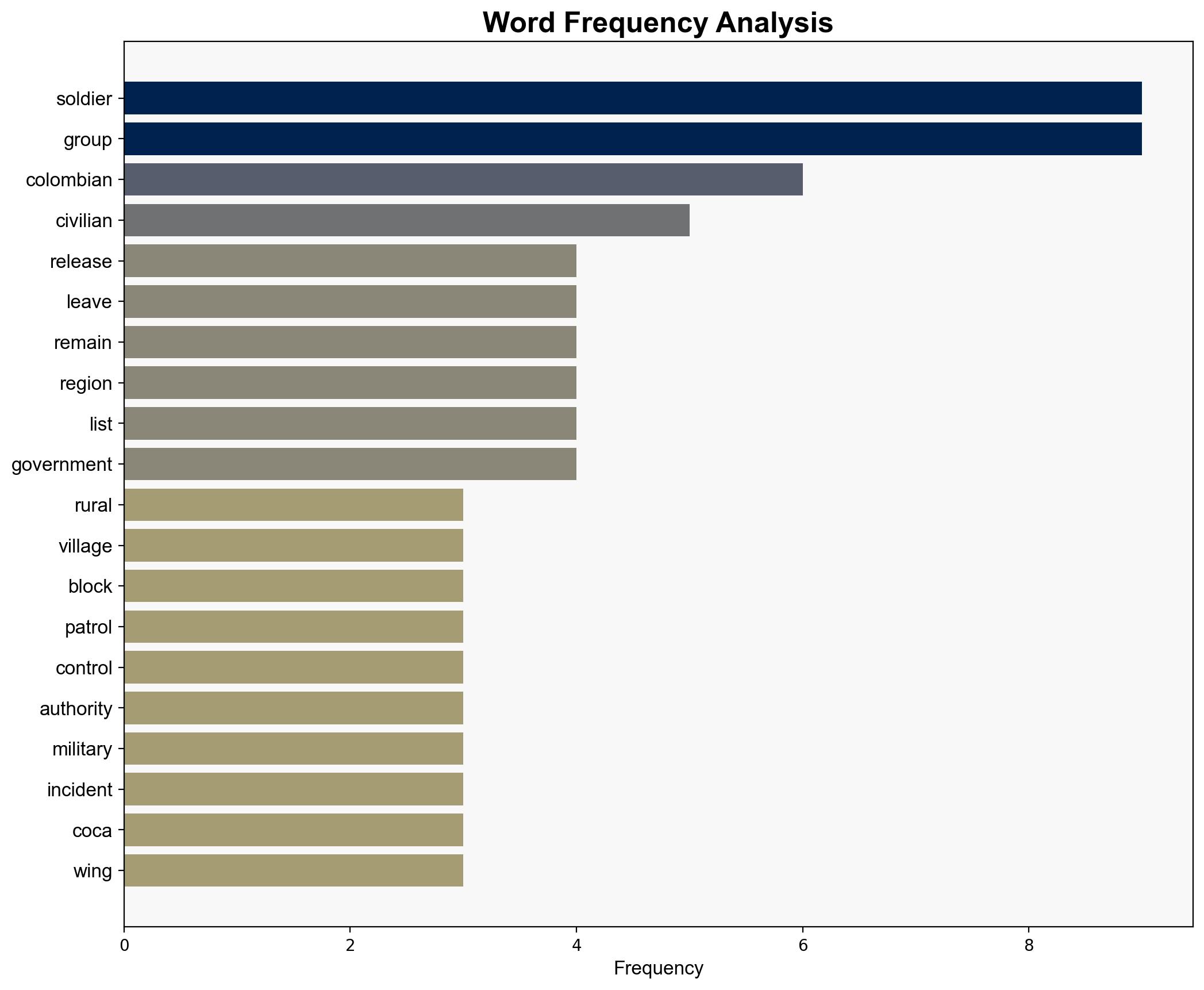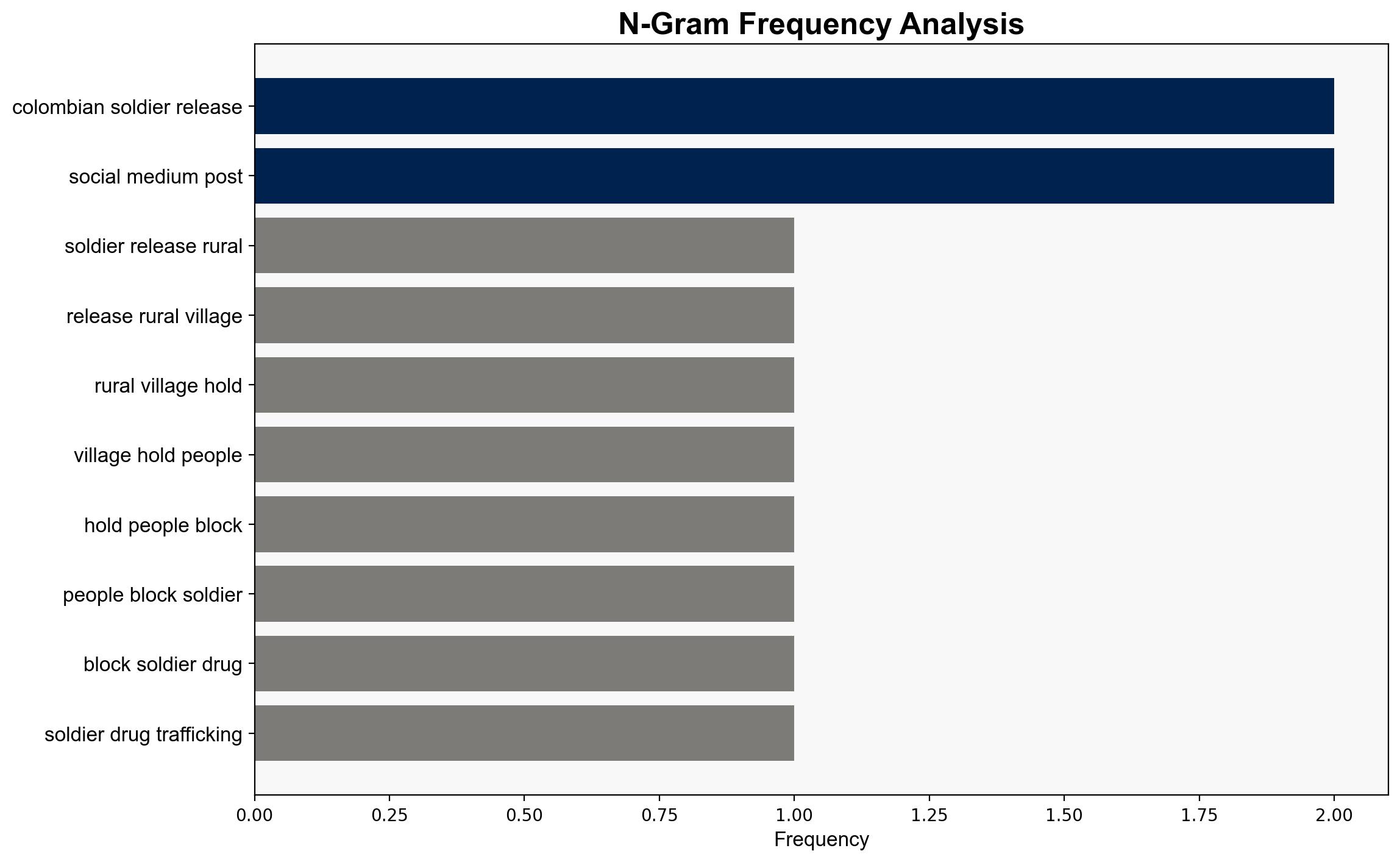Last Colombian soldiers released from rural village where they were held – Al Jazeera English
Published on: 2025-09-08
Intelligence Report: Last Colombian soldiers released from rural village where they were held – Al Jazeera English
1. BLUF (Bottom Line Up Front)
The most supported hypothesis is that the Colombian soldiers were held as a strategic maneuver by a splinter group to exert pressure on the government and assert control over a key coca-producing region. Confidence level is moderate due to limited direct evidence. Recommended action includes enhancing intelligence operations in the region to monitor splinter group activities and strengthening community engagement to reduce civilian support for armed groups.
2. Competing Hypotheses
1. **Hypothesis A:** The soldiers were held by a splinter group to leverage negotiations with the government for political or economic concessions.
2. **Hypothesis B:** The soldiers were detained by local civilians under pressure from armed groups to prevent anti-narcotic operations in the region.
Using the Analysis of Competing Hypotheses (ACH) 2.0, Hypothesis A is better supported. The involvement of a splinter group aligns with historical patterns of using hostages as bargaining chips. Hypothesis B is less supported due to the lack of evidence of civilian-led detentions without armed group influence.
3. Key Assumptions and Red Flags
– **Assumptions:** It is assumed that the splinter group has the capability and intent to hold soldiers for negotiation purposes. It is also assumed that the local population is under significant influence from armed groups.
– **Red Flags:** The absence of detailed accounts of negotiations or demands from the splinter group. Potential bias in attributing the incident solely to splinter groups without considering local civilian dynamics.
4. Implications and Strategic Risks
– **Patterns:** The incident highlights the ongoing influence of armed groups in coca-producing regions and the challenges in enforcing state authority.
– **Cascading Threats:** Continued instability could lead to increased violence and hinder government efforts to implement peace agreements.
– **Potential Escalation:** If not addressed, similar incidents could escalate into broader conflicts involving more significant military engagements.
– **Geopolitical Dimensions:** The incident may strain Colombia’s international relations, particularly with countries involved in anti-narcotic efforts.
5. Recommendations and Outlook
- Enhance intelligence gathering and surveillance in regions with high splinter group activity.
- Strengthen community engagement programs to reduce civilian support for armed groups.
- Scenario Projections:
- **Best Case:** Successful negotiations lead to a reduction in armed group influence and improved regional stability.
- **Worst Case:** Escalation of violence results in increased military and civilian casualties.
- **Most Likely:** Continued sporadic incidents of violence and instability, with gradual government gains in control.
6. Key Individuals and Entities
– Gustavo Petro
– Pedro Sanchez
– Revolutionary Armed Forces of Colombia (FARC) splinter groups
7. Thematic Tags
national security threats, regional focus, counter-terrorism, insurgency dynamics




